#tract housing
Text
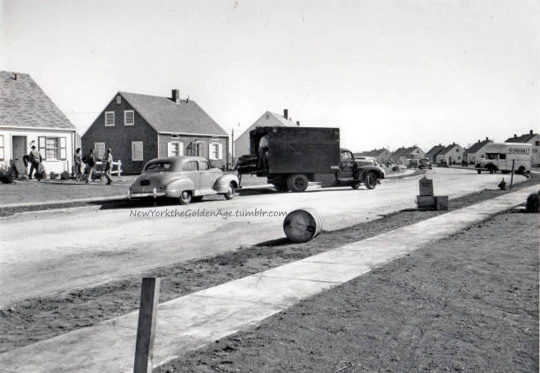
The first residents moved into the new Levittown, New York development on October 1, 1947.
Photo: Edna Murray for Newsday RM via Getty Images
#New York#NYC#vintage New York#1940s#Edna Murray#Levittown#housing development#suburbs#post-war#tract housing#October 1#Oct. 1#moving van
39 notes
·
View notes
Text
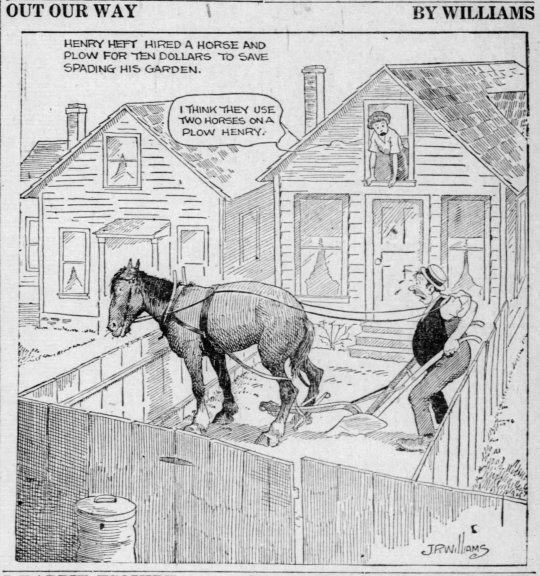
May 8, 1922
Out Our Way by J.R. Williams
Caption: Henry Heft hired a horse and plow for ten dollars to save spading his garden.
[ID: Henry stands nervously in his tiny tract home backyard. He's harnessed a horse up to a plow, but the entire contraption takes up the entire width of his yard. Henry stands with his back to the fence on the right side of his yard while the horse stands up against the left fence. Henry knows he has nowhere to go. His wife leans out of the second-floor window in back of the house, yelling to him. /end]
Mrs. Heft: I think they use two horses on a plow, Henry.
#newspaper comics#vintage#history#1922#out our way#transcript available#1920s#tract housing#suburbs#the american backyard
2 notes
·
View notes
Text
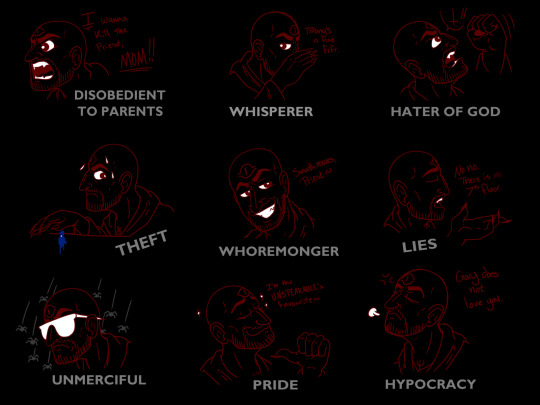
Found a silly Chick Tracts thing and immediately thought of Gary.
Original pic under the cut

#in this house we mock chick tracts always#my art#cat-attack1701#faith the unholy trinity#gary miller#john ward#had fun with these#not necessarily ship art#but not discouraging those who wanna see it that way <3
85 notes
·
View notes
Text
By the Shores of Silver Lake was my least favorite Little House book as a kid, and upon starting the reread, I could see why. Earlier books had Laura as a child observer--not engaging in or totally understanding the wider world of the adults, but still engrossed in the simple joys of childhood. In this book, Laura is neither child nor adult--she's too old to play like a child, but she's too young to take an active part in adult life, so she's stuck in this awkward middle ground.
Yet as the book went on, I started to see that that was the point. This book is about growing up, about being on the brink of adulthood and trying to hold onto childhood while also becoming someone new. Laura's growing-up is paralleled with the "growing up" of the country around her. Both the old and the new ways of life have their benefits and their downsides, and Laura has to figure out how to hold onto the best of both.
The prairie is beautiful, wondrous, free. Laura would love to just roam forever, always traveling west, always seeing new places. She doesn't want to marry, doesn't want to teach school, doesn't want anything to change about her way of life. But one can't stay a child forever. Eventually, the infinite possibility of childhood has to turn into the definite identity of adulthood. She has to take responsibility and settle down. The arrival of the town brings that adult life to the prairie, and in doing so, it destroys the innocent wonders of nature--the majestic wolves lose their home, the buffalo are gone, and the ducks no longer land at Silver Lake. Laura has to wrestle with this--is childhood, for herself and the prairie, gone forever? Does she have to let go of childlike wonder and embrace the mundane responsibility of adult life?
This theme is resolved when Laura finds Grace in the buffalo wallow. It's a place of impossible magic and beauty, a carpet of fragrant violets hidden away from the world with butterflies flying overhead, so perfect it seems like a fairyland. Of course Grace, the innocent child, is the one who was able to find it. When Laura asks Pa about it later, he explains that the "fairies" that made this magical ring were buffalo. There's a mundane explanation for the phenomenon, but that doesn't destroy the wonder and beauty of the place--adult knowledge enhances, rather than destroys childlike wonder. The buffalo might be gone, but there's still beauty left behind. Laura can move forward into the future and know that there are still wonders to find. She can be an adult and still maintain a childlike wonder, can take responsibility and still find comfort in the safety of home and family.
This thematic resonance made so much about the book so much deeper. It's the message of the entire series distilled into story form. Remember the past, children, but go forth boldly into the future. It's a message much easier to see with an adult's eyes, so I'm so glad I gave this book another chance.
#on the shores of silver lake#little house#laura ingalls wilder#i probably only saw this theme#because i just read her collection of fairy poems#and read a bunch of her farm columns where this theme is very prominent#she loves the simple joys of life#emphasizes the importance of hanging onto wonder and joy in the face of simple tasks#her descriptions of how much she loved taking out the cattle as a child made those scenes hit much deeper#those are the times when she gets to see the beauty of nature!#it makes the mundane chore a chance for beautiful reflection!#that kind of thing is all over this book and you know it's my jam#the point where this book really started to make sense was the scene with the wolves#laura faces this majestic wolf in the moonlight and it's like a fairy tale#the fading away of a fairy king#and suddenly everything about the theme just snapped into place#if i were a scholar my dissertation would be#'these books aren't just an old lady's memories or her daughter's libertarian tracts they're art and can we please talk about them like art
29 notes
·
View notes
Note
can you not eat bread
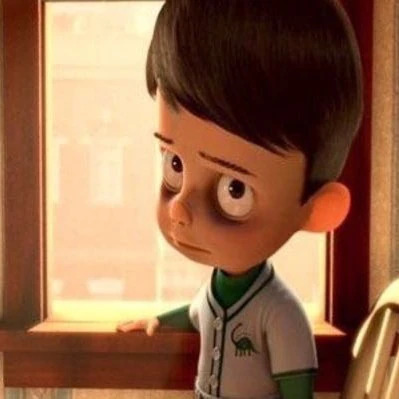
i have celiac disease so i cant eat anything with wheat, barley, or oats [some oats are gf and i CAN eat those]. youd be fucking amazed how many foods have fucking barley malt in them as flavouring [rice crispies, chocolate, many kinds of sauce]. i will also get sick if i eat food cooked in cross contaminated fry oil or in cookware that has had gluten in it. basically my immune system is holding a gun to my intestines and if a single gluten molecule gets in there its gonna shoot that thing. i can eat GF bread tho, which these days is not half bad.
#'isnt it hard to eat casually at other peoples houses' you may ask#and my answer is simple#i simply do not do that#i only really trust my family - other celiacs - and professional chefs to prepare food for me#bc id rather be hungry for a little while than get poisoned and give myself months worth of digestive tract damage#because in addition to amazing levels of joint inflammation#celiac autoimmune reactions destroy your small intestine and basically stop u from being able to take in nutrients#so you starve to death on a full stomach
15 notes
·
View notes
Text
I have seen a few people comparing Hunter from the Owl House to Glam from Metal Family due to them having a similar childhood of being pushed to perfection under fear of physical abuse by a paternal authority figure, only to escape the abuse as teenagers to forge their own paths and build a better family.
What I haven't seen said is that Glam and Hunter have the same taste in women
#Ship#Huntlow#Glam x Victoria#Metal family#The owl house#Glam would be in the bard coven BTW#Vicky would be construction#Dee is in the abomination tract but is planing on being a wild witch when he graduates#Heavy picked his tract using a dartboard
102 notes
·
View notes
Text
Do you guys know how to stop being sexually attracted to concepts. Like suburbia or office jobs or hotels. I really can't do this anymore I need to be a normal person
#me#something lgbt just happened to me#you guys should never let me buy a tract house ina suburban sprawl because i WILL get weird about it. and not in a fun way
3 notes
·
View notes
Text

The construction company behind the titular ‘Hell Tract Houses’ truly knew how to create the worst living conditions.
No wonder there were so many gang members running amok, doing whatever they wanted. Not like anyone living in the buildings could do anything about them.
#Inspector Spacetime#Malevolent Architecture (trope)#Malevolent Architecture#Hell Tract Houses (serial)#Seventh Inspector era#construction company#the erectors#titular buildings#knew how to create#the worst living conditions#no wonder#gangs running amok#doing whatever they wanted#not like#anyone living in the buildings#the residents#could do anything about them
0 notes
Text
The USAmerican imagination cannot consider land that is multi-purpose.
A corn field is Corn, an endless monoculture, and all other plants must be eliminated. A residential area is Houses, and absolutely MUST NOT!!! have vegetables or fruits or native plant gardens or small livestock. A drainage ditch is only a drainage ditch, and cannot harbor Sedges and native wetland plants, A sports field is for A Sport, and let no one think of doing any other event on that field, shops and storefronts must have their own special part of town that everybody has to drive to, which requires parking lots...and God forbid we put solar panels on roofs or above parking lots or anywhere they can serve an extra purpose of providing shade, instead of using a large tract of perfectly fine land as a "solar farm."
Numerous examples. But it is the most annoying with agriculture. The people who crunch all the numbers about sustainability, have calculated that a certain percentage of Earth's land is "Used up" by agriculture, which is troubling because that leaves less "room" for "Wilderness." It is a big challenge, they say, to feed Earth's humans without destroying more ecosystems.
Fools! Agriculture is an ecosystem—if you respect the ways of the plants, instead of creating monoculture fields by killing everything that moves and almost everything that doesn't. Most humans throughout history, and many humans today, sustain themselves using a mixture of foraging and agriculture, and the two are not entirely different things, because all human lifestyles change the ecosystem, and the inhabitants of the ecosystem always change themselves in response.
Even if you are a hunter-gatherer that steps very lightly in the forest and gathers a few berries and leaves here and there, you are being an animal and affecting all other parts of the ecosystem. By walking, breathing, eating, pooping, drinking, climbing, singing, talking, all of those things affect the ecosystem. If you gather leaves to sleep on, that affects the ecosystem...if you pile up waste, that affects the ecosystem...if you break a tree branch, that affects the ecosystem...if you start a fire, if you create a small shelter, if you cut a path, that DEFINITELY affects the ecosystem.
This idea, that human activity destroys the ecosystem and replaces it with something Else, something Not an ecosystem, is so silly. "But you just said that even the earliest most technologically simple human societies altered their environment!"
Yes, I did. Because we believe that "pre-agricultural" humans could have no effect on their "wilderness" environment, we ALSO believe another false idea: That when humans affect an environment, they destroy "Wilderness" and change it to something else, like Agricultural Land, that can never have biodiversity and never benefit many life forms.
I think it is the European idea of agriculture that it always involves people settling down and relying on a few special plants that are domesticated intentionally and grown in specially dedicated fields. After all, this idea of an agricultural lifestyle, is in contrast with the "hunter-gatherer" lifestyle, which is assumed to be what humans do before they "figure out" agriculture. The European mind imagines "pre-agricultural" folks ignorantly bumbling about, thinking plants and animals conveniently pop out of nothing for their benefit.
Bullshit! I shake my head in disappointment when I see websites describing Native Americans using wild plants as if those plants just-so-happened to grow, when those same wild plants just-so-happen to thrive only in environments disturbed by humans in some way, and just-so-happen to have declined steeply since colonization, and just-so-happen to be nonexistent in unspoiled "Wilderness" locations, and (often) just-so-happen to have an incredibly wide range where they either once were or are incredibly common, making it very...fortunate that they just-so-happen to have a wide range of uses including food, medicines, and materials for clothing and technology.
Accidentally of course, without any human impact from the humans that were impacting everything. /s
"But if it wasn't an accident, how did it happen?" Here is how to understand this idea: Look at the weeds! The weeds will teach you.
Look at the plants you always see growing without being planted around human buildings and roads, and learn their history. Often you will learn that these plants have many marvelous properties, and have actually been used by humans for thousands of years.
In fact, some of the most powerful and difficult to control weeds, were once actually some of the most essential and important plants for human civilizations to depend on. The dreaded Kudzu, in its home in East Asia, was one of the main plants used for clothing for over 6,000 years, and not only that, it has been cultivated for food and medicine for millennia. You can make everything from paper to noodles out of Kudzu! And Amaranth, the most expensive agricultural weed in all the USA, produces edible and healthy grains as well as several harvests of greens per growing season, and several species of the genus have been fully domesticated and formed a staple crop of Mesoamerica.
Meanwhile...some people have come up with this neat "new" idea called Polyculture, which is where you plant a field with two crops at once and somehow get better yields from both of them. WITCHCRAFT! Unrelatedly, there are other ideas like "Cover Crops" and "Agroforestry" that for some reason have the same beneficial effect.
Wow...It turns out, sterilizing the whole environment of every plant except one crop...isn't actually a good way to do agriculture in many places in the world.
Just think about it from an energy point of view...
We have some places used for "Agriculture," where we wring the land as violently as possible to squeeze green vegetation from light energy.
And we have other places for Other uses, where we spend massive amounts of fossil fuels mowing, chopping, poisoning and trimming to STOP the land from producing its incredible bounty of green vegetation.
And in the agricultural fields, we spend even MORE resources killing the unwanted plants that grow spontaneously
This system is hemorrhaging inefficiency at both ends. It simply isn't a one-to-one conversion of land and fossil fuels to food energy. The energy expenditure of agriculture is mostly going into organizing the vegetation's energy into the shape and configuration we want, not the food itself.
In the Americas, indigenous agricultural systems involve using the plants that exist in the environment to construct an ecosystem that both functions as an ecosystem and provides humans with food, clothing, and other important things. This is the most advanced way.
Most of our successful weeds are edible and useful. A weed is simply a plant that is symbiotic with humans. My hypothesis of plant domestication is that it was initiated by the plants, which became adapted to human environments, and humans bred them to be better crops in response. Symbiosis.
Humans did not pick out a few plants special to intensively domesticate out of an array of equally wild plants, instead they just ate, selected, and bred the plants that were best adapted to live near human civilization. That is my guess about how it happened.
Just think about it. Why would you try to domesticate teosinte (Maize ancestor?) It sucks. Domesticated plants in their wild form are usually like "Why would you put hundreds of years of effort into cultivating this?" Personally I think it's because the plant grew around humans and humans ate and used it a lot because it was abundant. So we co-evolved with the plant.
Supporting this hypothesis, there are many crop plants that mutated and evolved back into weeds, like "weedy" rice, "weedy" teosinte, and "weedy" radishes. Also weeds develop similar adaptations to crop plants to survive in the agricultural environment.
Consider Kudzu. Everyone in the USA knows it as an invasive weed, but since ancient times in China, it was a crop that provided people with fabric from its bast fibers, food from its enormous starchy roots, and many medicinal and other uses. Kudzu is not evil, it simply has a symbiotic relationship with humans, and just as any other species might serve as a biological control, the main biological control of kudzu in nature is the human species.
Think of the vast fields and mountain sides of the South swallowed by thick mats of Kudzu covering lumps that used to be trees. Think of the people toiling away to clear the Kudzu, while wearing clothes made of cotton that was grown in a faraway place using insecticides and depleting fresh water, using energy from their bodies that came from crops grown in fields far away.
Now imagine people working to harvest the Kudzu, to cut the new vines and dig up the starchy roots and use the plant the way it is used by the people who know its ways. Imagine the people using the starch from the Kudzu root to make flour and noodles and sweet confections. Imagine workers processing the vines into thread which is woven into fabric. The hillsides and fields flourish with plants that used to be suffocated, and hillsides and fields in faraway places also flourish with their own plants, instead of being made to grow cotton and crops to provide for the needs the Kudzu provides for.
Imagine the future where we accept our symbiotic relationship with the plants!
3K notes
·
View notes
Text
there's something to bruce in the beginning of a death in the family saying that jason has started going into fights like 'someone looking to die' because he hasn't fully processed his grief over the deaths of catherine and willis, and then bruce's canonical suicidal tendency after jason is murdered and how he was throwing himself into being batman with no regard for his physical safety to the point where alfred was going to quit and tim decided to get involved because he was convinced bruce was trying to kill himself because of how heavily he was grieving jason. like, there's Something there.
#personal#i'm a bit drunk cuz i was at my parents' house for a wee barbecue and i had some champagne#cuz i got into my first choice college so therefore there was some Celebrating#so i reread death in the family this afternoon because i decided to torture myself for some reason#so i'm once again back on my 'bruce and jason are very similar' tract#and also just in general being Sad about it#which means all the non-comics mutuals have to deal with batman blogging again#but listen i'm onto something here i'm speaking something into existence right now
0 notes
Text
anti-fatness is not just body shaming.
anti-fatness is discrimination. anti-fatness is having next to no legal protections for being discriminated against. anti-fatness is being denied housing, jobs, receiving less pay and promotions (legally) because of your size. anti-fatness is being denied access to clothing, seating, transportation, and other human rights because infrastructure has been designed to exclude you. anti-fatness is less likelihood of receiving a fair trial. anti-fatness is dehumanization. anti-fatness is being denied necessary surgeries, but not surgery that amputates the digestive tract with the intent to starve and shrink you (it doesn’t work either). anti-fatness is mutilation. anti-fatness is being subject to torture devices that bolt your mouth shut. anti-fatness is being told by close friends, family, and professionals that you are better off living with an eating disorder or other life-threatening illness. anti-fatness sells you starvation as a guaranteed opt-out of oppression, but doesn’t tell you that bodies will always regain weight to survive. anti-fatness blames and punishes you for failing at an achievement that is quite literally impossible. anti-fatness is a $90 billion dollar industry. anti-fatness is being denied gender-affirming care. anti-fatness is being barred from in vitro fertilization and reproductive healthcare. anti-fatness is being barred from adopting children. anti-fatness is being removed from your loving parents because they couldn’t make you thin. anti-fatness is intentionally starving your own baby so they won’t get fat. anti-fatness is disproportionately high suicide rates. anti-fatness is being killed at the hands of medical neglect and mistreatment. anti-fatness is the world preferring a dead body over a fat one.
#i’m sorry that my fellow fat followers have to see this. you all already know it. you’ve lived it.#spread this like wildfire so that thin people can wake up.#resources#tw anti fatness#tw fatphobia#tw medical fatphobia#tw anti fat bias#tw anti fat violence#fat liberation#fat acceptance#fatphobia#fat activism
2K notes
·
View notes
Text
.
#my friend just asked me to co-sign her new apt cuz she’s being kicked out of the one she’s currently in#and this is the 3rd place she’s been kicked out of because between her and her mom they just have no capacity for how to use their money#like they’ll be behind on hella bills and then book a cruise which like that’s your money do what you want#but i have been their go to person for like rent-a-center and things like that and i ALWAYS get a call from those places trying to find them#cuz instead of paying their bills they go shopping or whatever and i still feel like shit telling her no I won’t do sign#co-sign* cuz i work so so so fucking hard to get my credit to where it’s at rn and it’s sexy my credit score is so hot and i want to start#the process of buying a house in the next year or so and i just know if I go into this they’re going to do some#stupid shit and it’s going to impact my credit and im not willing to let that happen but at the same time i don’t want my nigga like#in the streets cuz they can’t find a spot but there’s no way for me to police how they spend their money#even if we were to sign some co tract at the end of the day IM going to be the one that is going tiger harmed by this#but im the person who fixes things so I wonna like cuz i said no but i need to be selfish about this like#credit scores are fucking STUPID and we need to get rid of them but for rn i cannot fuck mine up because they already don’t work on theirs#like between the two of them their credit is so bad they’ll need a third person and like we are all 30+ in this situation like nah i can’t
0 notes
Text
Tell me about your general region (continent or country) and living density (rural enough that your nearest neighbor is eight miles away, suburban where there's nothing but single-family housing as far as the eye can see, a city with tens of thousands of people per square mile, etc) in the tags!
Metric measurements rounded to the nearest half meter, then nearest tenth of a kilometer.
According to the USDA, a food desert is:
A tract with at least 500 people, or 33 percent of the population, living more than one-half mile (urban areas) or 10 miles (rural areas) from the nearest supermarket, supercenter, or large grocery store.
#polls#phoenix polls#food#food deserts#suburbia#rural#urban#anyway I live in suburban hell and my nearest grocery store is about 45 minutes away by foot. and it's too dangerous to bike. so.#always gotta drive
943 notes
·
View notes
Text
Moon and storage of emotions
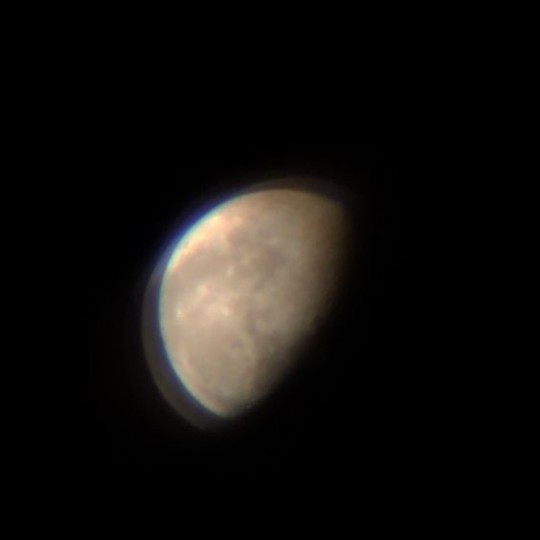


🪻Emotions are linked to moon , hence the placement of moon also plays a role on as to where you store your emotions , the various houses are
-1st House : whole body, head, mind, brain, mind, hair,skin, limbs.
- 2nd House : Face, nose, right eye, tongue, teeth, oral cavity, larynx, gullet, nails, bones .
- 3rd House : Right Ear, neck, shoulders, collar bones, clavicles, windpipe, breathing, food pipe, first part of hand, thyroid .
- 4th House : Heart, lungs, chest, diaphragm and blood.
- 5th House :upper abdomen, gallbladder, liver, pancreas,spleen and small intestine.
- 6th House: Lower abdomen, large intestine, kidney and appendix. This is termed as the house of disease.
- 7th House : urinary tract, prostate gland, uterus, ovaries, testes, emen and groins.
- 8th Houses : External genital, rectum, seminal,vessels and limb.
- 9th House : Hips, thighs and anterior system ( female)
- 10th House : Kneecap, knee joint and popliteal fossa.
- 11th House : left ear, legs and shanks.
- 12th House : left eye, feet,,crippled limbs .
🪻If you're suffering from a disease and have no answers to why the pain or infection is persistent keep a check on repressed emotions or bad placements of your moon .
🪻For example a 6th moon in the houses of diseases needs to take remedies if the sign isn't a good or a moderate sign .
🪻Imao i have moon-saturn in 1H all of my emotions are on my face .
🪻for a deeper dive on ailments look for the moon , 6th house and the D30 chart .
Thank you for reading 🩷
#astrology notes#astro notes#astrology#astro community#sidereal astrology#vedic astrology#astro observations#astrology community#astrology observations#Spotify
803 notes
·
View notes
Text

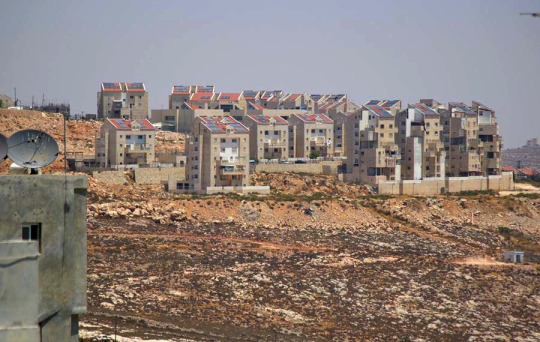
"Settlement" housing surveys and dominates the landscape, West Bank, Palestine
THE ARCHITECTURE OF VIOLENCE (2014)
It feels like an important time to revisit this short documentary. Part of the Rebel Architecture series, the film examines, clearly and concisely, the use of design as a weapon of intimidation and subjugation within the Palestine Israel conflict. One element it focuses on is Palestine's 'architecture of occupation': the way the built environment, even in the form of suburban 'settlement' housing (in which tracts of Israeli homes have been built in occupied territories like the West Bank), has been deliberately shaped to intimidate, surveil, segregate, and even dehumanise.
"Settlements are built on hilltops, overlooking Palestinian valleys, to dominate. They're laid out to create a suburban-scale optical device that can survey the territory. The bright red roofs of the houses are mandated by law... to allow military to understand what's friend and foe: where to bomb and where not to."
"...When you put Israeli colonies on highways, you accelerate Israeli movement through the space. In the same way, with every twist and turn of terrain, Palestinians encounter a checkpoint, a border, a fence, a valley they cannot cross..."
It's important for architects and urban designers everywhere to understand that our craft has the potential to be weaponised. It's important that, no matter whom the client, we think about how a project will impact everyone whose life it touches. But sadly, as essential as these considerations are, they're of no immediate help to civilians from both sides who are suffering in Gaza and the rest of Palestine and Israel right now. So, it seems worth sharing:
Some ways that we can help:
1. Speak up. Send an email to your elected representative. Sign petitions. Stand up in any forum you can against human rights violations, and against both islamaphobic and antisemitic behaviour.
2. Contribute to a trusted aid organisation working in Gaza, such as Unicef or the British Red Cross. Sites like charitynavigator and charitychecker can be used to check it's a group who'll use it well.
3. Understand the context. Short videos here and here provide a clear introduction/overview.
4. Boycott companies that are directly profiting from the illegal occupation, and from human rights violations.
(Images: Ronen Zvulun/Reuters via Guardian, Léopold Lambert/Funambulist)
637 notes
·
View notes
